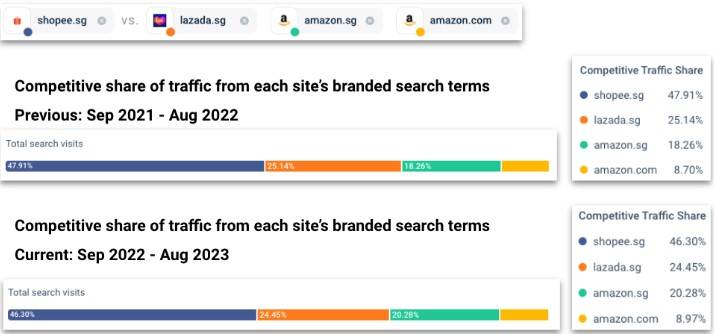SimilarWeb recently announced several new tools with marketers’ in mind to better track and measure brand performance, and to keep digital marketing teams aligned to purpose. Uri Snyder, Senior Vice President, APAC, Similarweb, explains to us the importance of understanding brand strength, and how better tools can boost brand’s effectiveness in driving growth for businesses.
Brand strength can be defined as a measure of how well a company’s brand is known and trusted in terms of customer loyalty, recognition, and market share. It is a key factor in determining business success, as strong brands are easily identifiable and have many customers who stand by the quality of their products and services.
Gaining brand strength doesn’t happen overnight, as it comes from consistent delivery and sustained performance. Companies need to be able to establish strong and meaningful connections with their customers and partners, differentiate themselves from the competition, ensure that their messaging is similar across marketing campaigns, and have well-defined products and services.
Best Practices in Measuring Brand Strength
The Brand Strength Index (BSI) is an objective measurement that evaluates various factors, including brand awareness, customer loyalty, and market share. This tool is essential for companies to assess how well they are performing compared to their peers.
Besides that, there are also social listening campaigns in which organizations monitor the conversations about their brand, product, or service across social media. This method is great for determining which messages will resonate with audiences, identifying emerging trends, and measuring campaign effectiveness.
Surveys are also another tool used to gauge the opinions, perceptions, and experiences of customers about a particular brand. These factors help companies determine brand loyalty, awareness, and customer satisfaction.
While these methods are designed to understand how well brands are performing, they do not take into account dynamic market data such as actual customers’ behavior, which sheds light on their needs and preferences. With advanced analytics, brands can uncover the measurements, metrics and insights that can resolve this.

Uri Synder, SVP, APAC, Similarweb
For example, Similarweb’s engine found that while competition between Amazon, Shopee, and Lazada was high, the three had increased their branded search traffic by 2.29 percentage points while those of the other two online marketplaces fell. This information is crucial in measuring brand recall, which is one of the determining factors of brand strength.

Image courtesy of Similarweb
Perseverance and Customer Knowledge Key to Building Brand Strength
Several factors contribute to brand strength, including awareness, differentiation, consistency, loyalty, innovation, adaptability, and customer service. It’s important to note that building brand strength is an ongoing process that requires long-term planning, perseverance, and knowledge of target audiences’ needs and wants. They also need to take into account their own business goals and market dynamics so they can prioritize which factors matter most for their brand.
Similarweb’s data sets can help in this effort by enabling companies to track audience loyalty. For example, comparing year-to-date data (August 2023) with the same period last year found that Shopee and Amazon consumers are more likely to stick with their respective e-commerce brands. In particular, Shopee customers who didn’t visit competing marketplaces increased from making up 28.05 percent of the overall audience to 33.51 percent. The same growth also occurred in Amazon, from 21.95 percent to 24.77 percent. Meanwhile, the percentage of online shoppers who have stuck with Lazada and have not visited the other two brands has dropped from 24.66 percent last year to 18.67 percent this year.

With companies increasing their online branding activities, Similarweb’s datasets give brand marketers an insightful window into surges or drops in traffic from various digital channels, including social media. In fact, since May, Similarweb have detected a growing social channel traffic to lazada.sg, to the point where it overtook Shopee in August.

Working with relevant market and customer insights, can help marketers and businesses unlock new opportunities for better customer embeddedness, and even create spend and retention propensity models to strengthen their business pipelines.








